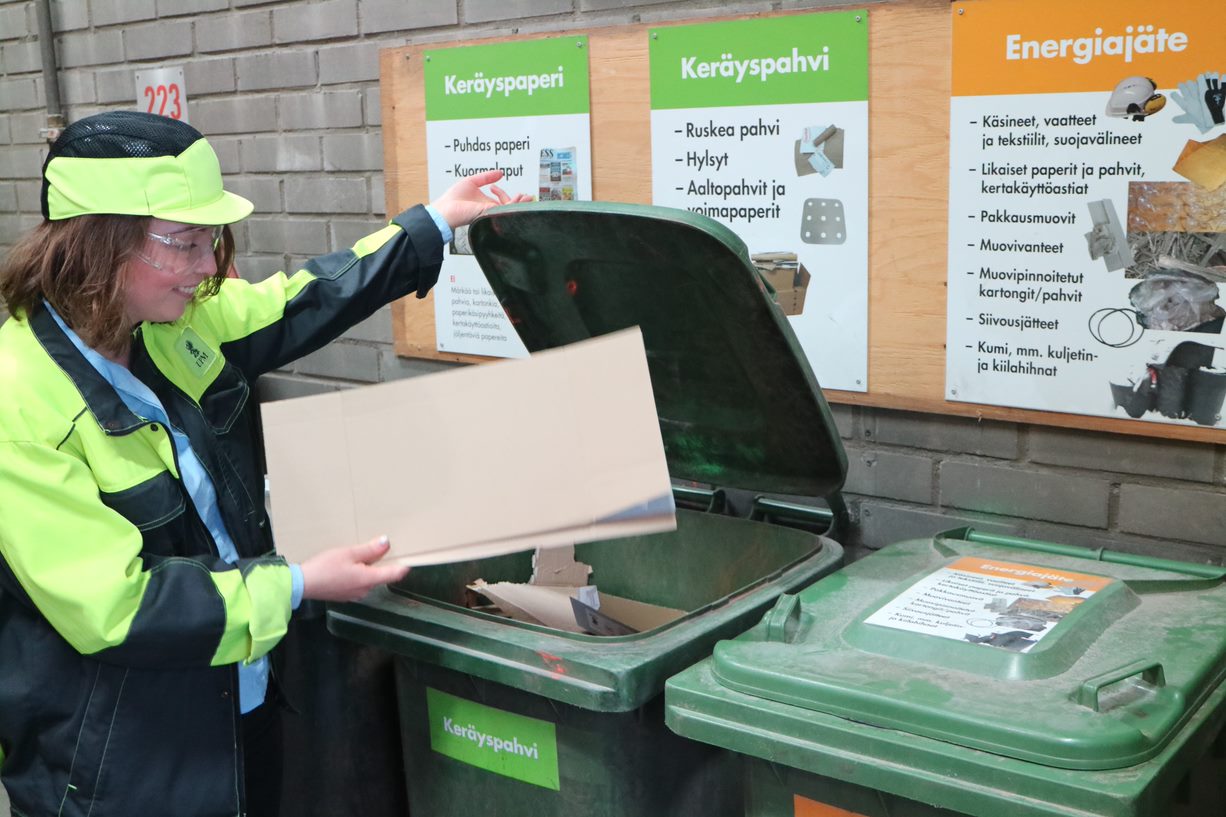 In Finland, UPM’s plywood mills generate practically no landfill waste at all. This means that all waste generated at the mills is used as either raw material or energy. This has been the case for the past two years.
In Finland, UPM’s plywood mills generate practically no landfill waste at all. This means that all waste generated at the mills is used as either raw material or energy. This has been the case for the past two years.
According to UPM Plywood's Environmental Manager Sanna Kontinen, the company aims to reach this point in all of its mills by 2030.
“Our company-level target is to not send any waste to landfill. Recycling is not an inconvenience if it is incorporated into our routine,” Kontinen states.
Our Finnish mills are the frontrunners in recycling and the UPM Otepää mill in Estonia has made significant efforts to reach the zero-waste-to-landfill target. The UPM Chudovo mill in Russia is also actively searching for reuse applications, but the lack of these applications on a local level poses a significant challenge.
Streamlining recycling initiatives and the zero-waste-to-landfill target are part of our environmental responsibility.
Recycling saves raw materials
As well as being in accordance with our customers’ wishes, recycling is steered by Finnish legislation on waste and the resulting waste hierarchy outlined within this legislation. According to the legislation, the primary target is to prevent the generation of waste. However, if waste is generated and cannot be reused, it should be used as material. For example, used packaging material can be recycled as cardboard or plastic, which means they can be reused as raw materials.
If waste cannot be used as material, it is to be used as energy. Sorted fractions can be used as benign fuels, which reduce the need for fossil fuels. The incineration of waste to produce energy is the last option.
Waste management is developing; even sandy bark waste is now accepted
Once the production side streams are utilised, mills generate the same kinds of waste percentages as households. Clean paper and cardboard are collected for further processing, while combustible waste is sorted into energy waste. Metal, bio-waste and hazardous waste are collected separately. Clean wood waste is crushed and used to generate energy at the mills.
“At certain mills, clean plastic packaging is already collected separately and the materials are sent for recovery. This is a great example of the continuous improvements being made in waste management,” Kontinen says.
In the past few decades, recycling and reusing waste as energy has seen a significant increase. Giant leaps have been taken in the field in other ways, too. According to Kontinen, zero waste going to landfill has been enabled by multiple factors: the more accepting approach towards recycling, the development of technology and the changes in legislation.
“Before, we couldn't use the sandy bark waste from the bottom of soaking ponds and log storage areas. Now, this sandy bark is pre-treated by crushing it, and then the crushed bark can be used as mulch in landscaping or to increase the development of organic matter in fields,” says Kontinen.
For example, the ash from power plants is used in UPM’s forest road construction and as fertiliser in forests and fields.
Minimising packaging makes things easier for customers too
Packaging and the collection of plastic packaging requires continuous development. By choosing what type of plastic we use, we can control whether we generate recyclable or combustible material. Some mills send the plastic on for further use. According to Kontinen, it is not worthwhile transporting plastic far away for further processing if the transportation results in more emissions than benefits.
“Minimising packaging materials also reduces the amount of hassle at the customer's end,” Kontinen states.
Text: Anu Ritvanen
